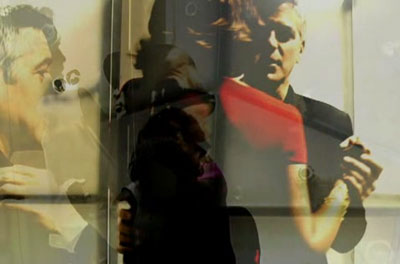
This week, critic Ben Davis wrote an interesting treatise on "The Superartist." Davis uses the term to describe those artists who are super savvy at penetrating the media, and become superstars by virtue of their collaborations with big corporations and work in mainstream contexts. His argument was that so-called 'Superart' has a populist touch, and appreciation of the work tends to be an appreciation of being part of a collective, as opposed to an individual, aesthetic experience, just as the works themselves tend away from personal statements and towards blank social referents. As it turns out, this could be a very good critique of Lincoln Schatz's newest project, Esquire's Portrait of the 21st Century, in which the generative artist uses his own custom software to create an evolving portrait of those 75 people the magazine has deemed the most important people of the coming decades...Just in time for Esquire's 75th anniversary issue. Schatz has constructed a "CUBE," the white frosted glass walls of which very much resemble a Chelsea gallery facade except that the structure is studded with video cameras and Mac minis. The stars in question are invited into the cube for hour-long interviews about their personal interests, after which they are generatively collaged into an evolving constellation with other stars, according to their shared interests. In a tried and true display of the magazine's firm grasp of 21st century media, Schatz is keeping a blog in which the portraits are uploaded. So far, the footage is very beautiful and almost painterly in the ways that it overlaps and meshes together. It's easy to create corporate collaborations as sell-out projects, but harder to spend the time thinking about a work's wider resonance. The artist's bio says that his work "has focused on the experience of place and the meanings produced by the collisions of nonlinear sections of time." Thus far, this piece lives up to this self-prescribed ethos while managing not to intervene but rather to intermingle with a facet of the culture industry many in the art world would like to pretend doesn't exist. Ben Davis might call this an "interpenetrating alignment of economy and culture--the definitive characteristic of 'superartistry.'" The place and units of time sewn together in Schatz's project are in fact the very site of production of the magazine, and they are the very units of personal time (labor) that celebrities expend to keep the wheels of this machine in motion. There seems no better site for a media-based portrait of media culture. - Marisa Olson
Image: Portrait of George Clooney

